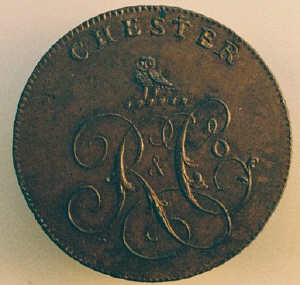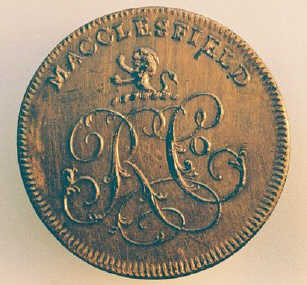Charles Roe Token Production
Royal copper coinage was issued sporadically and grudgingly from 1672 to 1775, when it stopped altogether. Copper prices were rising and the monarchs thought copper an unworthy metal to bear their image. Various counterfeit coins and tokens circulated freely but did not meet the increasing need for copper coins to pay wages and make change as the Industrial Revolution accelerated.
The Parys Mine Company in Anglesey Wales found their own solution. In 1787 the company began to use their own abundant copper supply to issue handsome full weight "Druid" tokens to pay their workers that were eagerly accepted by the local population and merchants. This idea was quickly adopted by other industrialists like John Wilkinson and Charles Roe and a new series of British tokens was thriving. Soon towns, merchants, political organizations, and wealthy individuals were issuing tokens -usually copper halfpennies,pennies, or farthings -to meet an ever increasing demand that would last until the Regal coinages of 1797 and 1799.
--------------------------This is the first Roe Chester halfpenny token Side1-----------------------------
---------------------------Side2 Roe Chester halfpenny token------------------------------

-----------------------------The first Macclesfied halfpenny token-----------------------------------
--------------------------------Side 2 Roe Macclesfield halfpenny token-------------------------------
